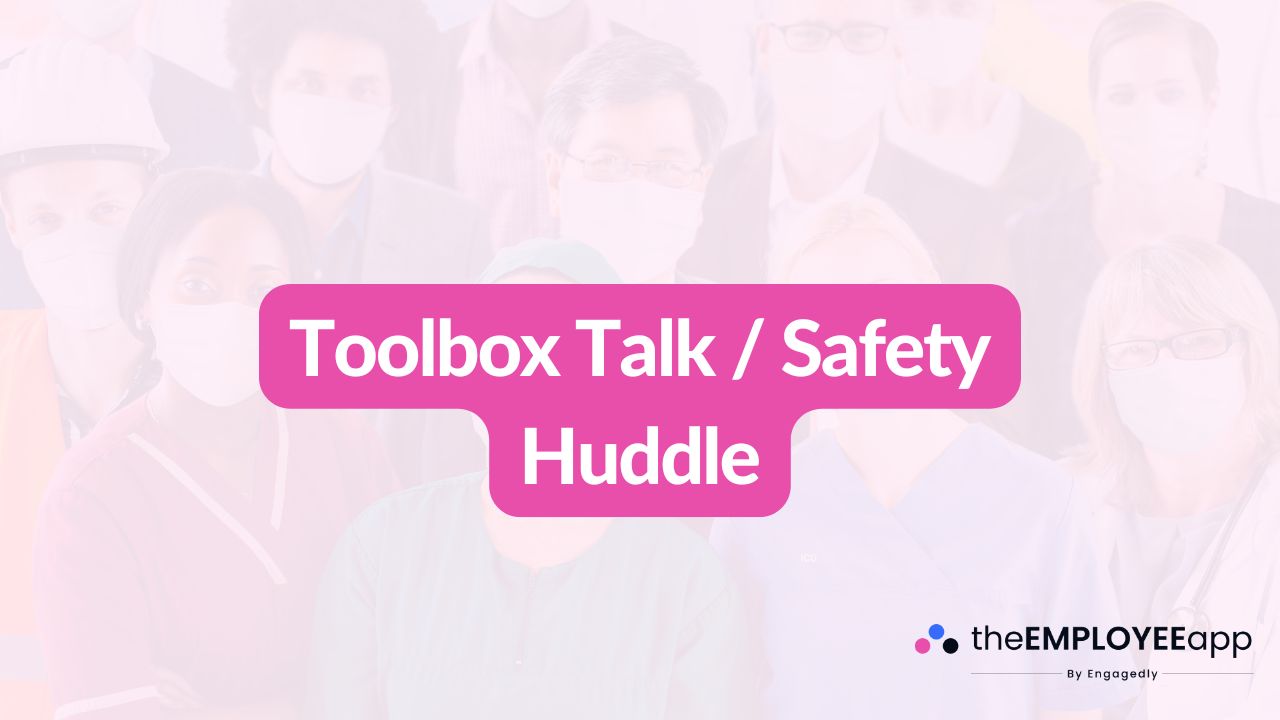
A toolbox talk, often referred to as a safety huddle, is a short, focused meeting held before the start of a work shift or project. The purpose is to discuss potential hazards, review safety procedures, and ensure that every team member understands their responsibilities for maintaining a safe workplace. Unlike long training sessions, toolbox talks are concise, practical, and tailored to the tasks employees will perform that day.
These conversations are one of the most effective ways to reinforce a company’s safety culture. By dedicating just a few minutes each day to safety, organizations can reduce incidents, improve communication, and keep employees engaged in their well-being.
Work environments, especially those involving physical labor, machinery, or hazardous conditions, can change quickly. Toolbox talks provide a proactive approach to safety by:
Highlighting immediate risks specific to the day’s tasks.
Reinforcing company policies and safety protocols.
Encouraging employees to speak up about concerns or near misses.
Building teamwork and accountability among crews.
Creating a consistent rhythm of safety awareness.
Even a five-minute discussion can prevent serious incidents when it reminds workers to stay alert and follow proper procedures.
For a toolbox talk or safety huddle to be effective, it should include:
Clear Objective: Focus on one or two key topics relevant to the day’s work, such as equipment handling, PPE requirements, or site-specific hazards.
Interactive Engagement: Encourage workers to share feedback, ask questions, and discuss real-world examples.
Practical Guidance: Provide actionable safety instructions rather than generic information.
Documentation: Keep a record of the meeting, including topics covered and attendees, for compliance and accountability.
Conciseness: Keep it short—usually 5 to 15 minutes—to maintain attention and avoid delaying operations.
Toolbox talks can be adapted to almost any workplace or industry. Common topics include:
Proper use of personal protective equipment (PPE).
Safe lifting techniques and ergonomics.
Hazard communication and chemical safety.
Equipment maintenance and lockout/tagout procedures.
Fire prevention and emergency response.
Heat stress, fatigue, and wellness awareness.
Reporting near misses and incidents.
The flexibility of toolbox talks makes them an ideal way to address seasonal risks, industry trends, or lessons learned from recent workplace incidents.
Implementing regular toolbox talks provides both immediate and long-term benefits for organizations, including:
Reduced Accidents: Frequent reminders keep safety top of mind, lowering the risk of injury.
Improved Communication: Open dialogue builds trust and ensures safety concerns are addressed quickly.
Employee Engagement: Workers feel heard and involved when they can contribute to discussions.
Regulatory Compliance: Many safety standards recommend or require ongoing safety meetings.
Culture of Safety: Consistent emphasis on safety strengthens organizational values and employee confidence.
To maximize the impact of toolbox talks and safety huddles, organizations should follow these best practices:
Prepare in Advance: Identify relevant topics based on current tasks, recent incidents, or seasonal hazards.
Use Real-Life Examples: Connect the topic to actual workplace scenarios for better understanding.
Encourage Participation: Ask open-ended questions and allow employees to share insights.
Stay Consistent: Hold talks regularly, ideally at the beginning of every shift.
Follow Up: Reinforce lessons learned by observing whether workers apply them on the job.
Safety huddles are more than just quick reminders; they symbolize an organization’s ongoing commitment to employee well-being. When managers and supervisors consistently lead these talks, it sets the tone that safety is a shared responsibility. Over time, this practice fosters a culture where employees not only follow safety rules but also take initiative to protect themselves and their coworkers.
A toolbox talk or safety huddle is a simple yet powerful way to enhance workplace safety. By dedicating a few minutes each day to hazard awareness and safe practices, organizations can significantly reduce risks, improve communication, and build a stronger safety culture. Whether in construction, manufacturing, healthcare, or any other industry, these short meetings help create safer, more productive, and more confident teams.
